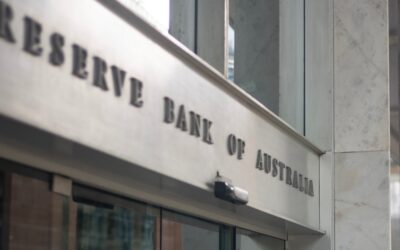In this article:

Owning a home is one of the most significant investments you’ll make in your lifetime. But if you’re not careful, that investment could be costing you more than it should. Many Australian homeowners, especially first-time buyers and mortgage borrowers, fall into the trap of “set and forget” with their home loans. This complacency can lead to overpaying due to something called the “loyalty tax.”
What is the Loyalty Tax?
The loyalty tax refers to the higher rates or less favourable terms that long-term customers often pay compared to new customers. In the context of home loans and mortgages, this means that staying loyal to your bank could cost you more over time.
How Does the Loyalty Tax Work?
Due to how competitive Australia’s home loan market is, banks and lenders are frequently offering competitive rates to attract new customers but do not extend these offers to existing ones—think low introductory interest rates, waived fees or cash back bonuses. Over time, this can lead to higher interest rates and increased monthly payments for loyal customers.
So why do banks impose this loyalty tax? Banks rely on customer inertia. Once you’ve set up a mortgage, switching to a new provider involves time, effort, and paperwork. Many homeowners prefer to stick with their current lender, believing that loyalty will be rewarded or simply to avoid the hassle of refinancing. Unfortunately, this often results in paying more than necessary.
How much does it cost me?
A major enquiry by the Australian Competition and Consumer Commission (ACCC) in 2020 found that the average difference in interest rates paid by new and existing variable rate customers can increase from 0.29% to 1.04% over 10 years if a borrower remains with their original loan from their original lender. This can seriously add up over the life of your home loan.
On average, borrowers with home loans between three and five years old were paying around 0.58% above the average interest rate for new loans. Doesn’t sound like much right?
Well, as an example, if you were to borrow $250,000 and after 2 years, switch to a home loan that was 0.58% cheaper than your existing rate, that could save you $1400 in the first year, and $17,000 over the life of a loan. (1)
How can you avoid the Loyalty Tax?
Once you’re aware of the way Loyalty Tax works, you’re ready to get proactive with your financial management.
1. Regularly Review Your Mortgage Terms:
Don’t set and forget your mortgage. Make it a habit to review your mortgage terms at least once a year. Compare your current interest rate and terms with those available in the market.
2. Shop Around:
Don’t hesitate to explore other lenders and their offerings. Online comparison tools make it easy to see what competitive rates and terms are available, or simply ask your mortgage broker if there’s a better deal out there right now.
3. Negotiate with Your Current Lender:
Armed with information about better deals available elsewhere, approach your current lender. Banks may be willing to match or beat competitors’ offers to retain your business.
4. Consider Refinancing:
If your lender isn’t willing to offer better terms, refinancing with a new lender can be a smart move. Yes, it involves some effort and possibly fees, but the long-term savings often outweigh these costs.
5. Use a Mortgage Broker A mortgage broker can do the legwork for you, comparing multiple lenders and finding the best deal tailored to your needs. Their expertise can be invaluable in navigating the complexities of the mortgage market. They can also negotiate with your lender on your behalf, freeing you up to focus on the things that matter to you.
Next step? Ditch the Tax
It might be clear now that if you’ve been with your bank for a while and still have your original loan in place, then you’re likely paying more than you have to. Your lender may be willing to offer you a better rate than your current one, but you’ve got to be willing to ask the question, or simply ask your mortgage broker to.
Don’t fall into the set and forget trap with your home loan. The loyalty tax can cost you thousands of dollars over the life of your mortgage. By staying informed, regularly reviewing your mortgage terms, and being willing to negotiate or switch lenders, you can avoid this situation and keep more money going directly towards paying off the loan.
Ready to take control of your home loan? Contact Yellow Brick Road Home Loans today and find out how you can save. Our experts are here to help you achieve your property goals.
References:
(1) Home Loan Price Enquiry Final report – These estimates are based on: a (nominal) interest rate for the net present value calculation of 3.20%, which is the weighted average interest rate paid on variable rate owner-occupier loans with principal and interest repayments between three and five years old across all lenders in the Reserve Bank of Australia’s Securitisation Dataset as at September 2020 a remaining term of 25 years.



